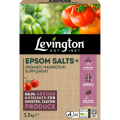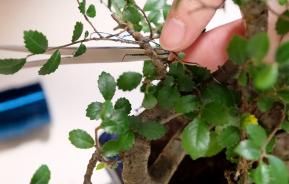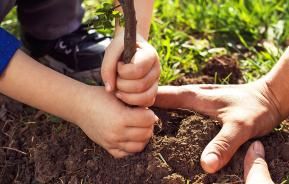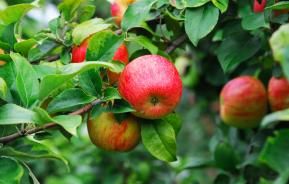The ultimate goal of growing a Bonsai is to create a miniaturized but realistic representation of nature in the form of a tree.
The Origin of Bonsai Trees
The word “Bon-sai” is a Japanese term which means “planted in a container”. This art form is derived from an ancient Chinese horticultural practise part of which was then redeveloped under the influence of Japanese Zen Buddhism. It has been around for well over a thousand years. Bonsai are not genetically dwarfed plants, in fact, any tree species can be used to grow one. Caring for a bonsai tree is a well-respected skill amongst gardeners and is very difficult to do to a high standard.
Bonsai Identification
In order to effectively look after your bonsai tree, you must know what species you have (if you don’t already, of course). First, you need to establish whether it is either a broad-leafed or coniferous tree, which is fairly easy to tell the difference. Broad leafed trees have wide flat leaves that are either evergreen or deciduous (sheds its leaves annually), and coniferous have needle-like foliage which is evergreen in most cases. Once you have decided on this type it gets a little more complicated based on leaf size, shape and colour.
How To Grow Bonsai Trees
Bonsai trees are often grown indoors but they can also be grown outdoors. We've put together a useful video on growing bonsai trees in your garden:
Watering Your Bonsai
When you are watering your bonsai tree you need to consider the usual questions – how often and how much water? Caring for a bonsai tree is very much an attentive job. You must learn to assess the situation of your tree as it is different for every case. You should be looking for the soil to become slightly dry, then it is time to water. For effective bonsai tree care, you should ensure that you saturate the entirety of the soil to moisten the whole root system. It is not advised to systematically water your tree, or on a set routine. The reason for this is that you have to account for climate change and the pace that soil dries will differ from time to time, so you risk drowning the roots as a result.
Positioning And Lighting
The light requirements for bonsai tree care is dependent on what species it is. After all, they are trees and outside is their natural habitat so they do typically need a lot of light. Most bonsai trees will not survive with artificial lighting indoors (unless you are exceptionally skilled), so it is best to play it safe and always position your bonsai tree where it can receive natural light.
Pruning Bonsai Trees

Pruning your bonsai is essential to maintaining its shape and even its health. Handle new shoots by trimming back, long shoots transfer all energy to the tips, weakening thin branches. Keep one or two sets of leaves and trim back any others using sharp scissors. Ideally, you want to maintain gaps between the branches to keep its unique shape and style. Think ‘tree’ not ‘bush'. The secret is in pruning often, it will be easier to manage that way and stop the shape becoming overgrown and lost.
Bonsai Tree Food
What you feed your bonsai tree depends a lot on the size of the tree. It is best to use granular bonsai food on larger trees as it is quite prone to be washed off of smaller trees. If you have the latter you should opt for a liquid feed as it not only won't get washed away but it will be suited if you water by saturating your bonsai roots as recommended. Liquid feeds often come too strong for bonsai trees, so it is a good idea to dilute the concentrate with a little more water than the manufacturer's recommendation on the bottle.
Optimum Bonsai Soil
The soil you use for your bonsai tree is an essential ingredient to its health. There is a range of ready-mixed soils you can buy online but it is also a good idea to make your own. Creating your own bonsai soil will save you some money and allow you to have a lot more control over the right mix. The three key components to the perfect bonsai soil are good drainage, good water retention and good aeration.
Bonsai Soil Mixtures
Bonsai soil should be mixed with akadama, potting compost and fine gravel. Akadama is a Japanese hard-baked clay which is specifically produced for bonsai tree care. On its own potting compost would not be ideal at all, as it doesn't aerate or drain well, but as part of good bonsai soil mixture, it can be perfect. The draining and aerating is where the fine gravel comes in. Together, these three ingredients will provide the most healthy soils for your bonsai. The mix should vary between deciduous and coniferous trees however, as you should use more akadama and less potting mix for coniferous trees. For deciduous bonsai soil, you should use a ratio of 2:1:1 in favour of akadama. For coniferous you should use a ratio 3:1:2 of akadama, potting mix and fine gravel respectively.
Disease Prevention
Although it may seem obvious, just giving your bonsai tree everything it needs will go a long way to preventing disease. This will allow it to protect itself from various illnesses, viruses and fungi. There are a number of things you can do to assist the bonsai, however. Keeping the soil optimum for your tree is essential, such as aerating it, and keeping it free from fallen leaves, blooms and other objects. You can also fertilise the soil from time to time to ensure it has the right nutrient level, and re-pot when necessary so the bonsai tree does not become pot bound.
Re-potting Your Bonsai Tree
Re-potting a bonsai tree is not as straight forward as it seems. Aside from the health conditions come with the right drainage, it is a personal decision that reflects your own style.
Re-potting essential to maintaining a healthy bonsai tree. By re-potting your plant you are replenishing its home and maintaining its nutrient upkeep. Re-potting your Bonsai will not keep it small; instead, it will supply the tree with new nutrients that it needs to grow and flourish. To check whether or not it is time to re-pot your bonsai tree, ease the tree out of the pot and inspect the roots. If there are lots of roots and little soil, it is time to re-pot. Tease out the long roots with a rook hook so that they hang down from the root-ball.
Finding The Right Pot
Your base criteria are the right measurements for your bonsai. The right depth is, of course, an essential as you are working towards adapting the bonsai root system. Once you have established the size and shape of your pot you can begin to decide what material your pot will be. Popular choices are ceramic, porcelain or stone, but you can go with glass, plastic, concrete and metal also. Be careful if you want to re-pot your bonsai in metal as some can release harmful toxins, so do your due diligence.
Masculine Or Feminine
The gender of your bonsai also comes into play. It might surprise you to learn that this is the most important part of choosing a new pot. Examples of masculinity in a bonsai are a strength, thick roots and dense branches. Examples of femininity are graceful curves, sparse branches and smooth bark. Once you know what your bonsai gender is, you can pick a pot design that matches and compliments it. For example, a feminine pot might have delicate feet and be tidy with smooth lines. Adversely a masculine pot will have clear lines, be deep and have an air of sharpness.
That is it, please let us know if you have any questions around bonsai tree care. Have you got any top tips that you do for your bonsai? Let us know about it @LoveTheGarden.








